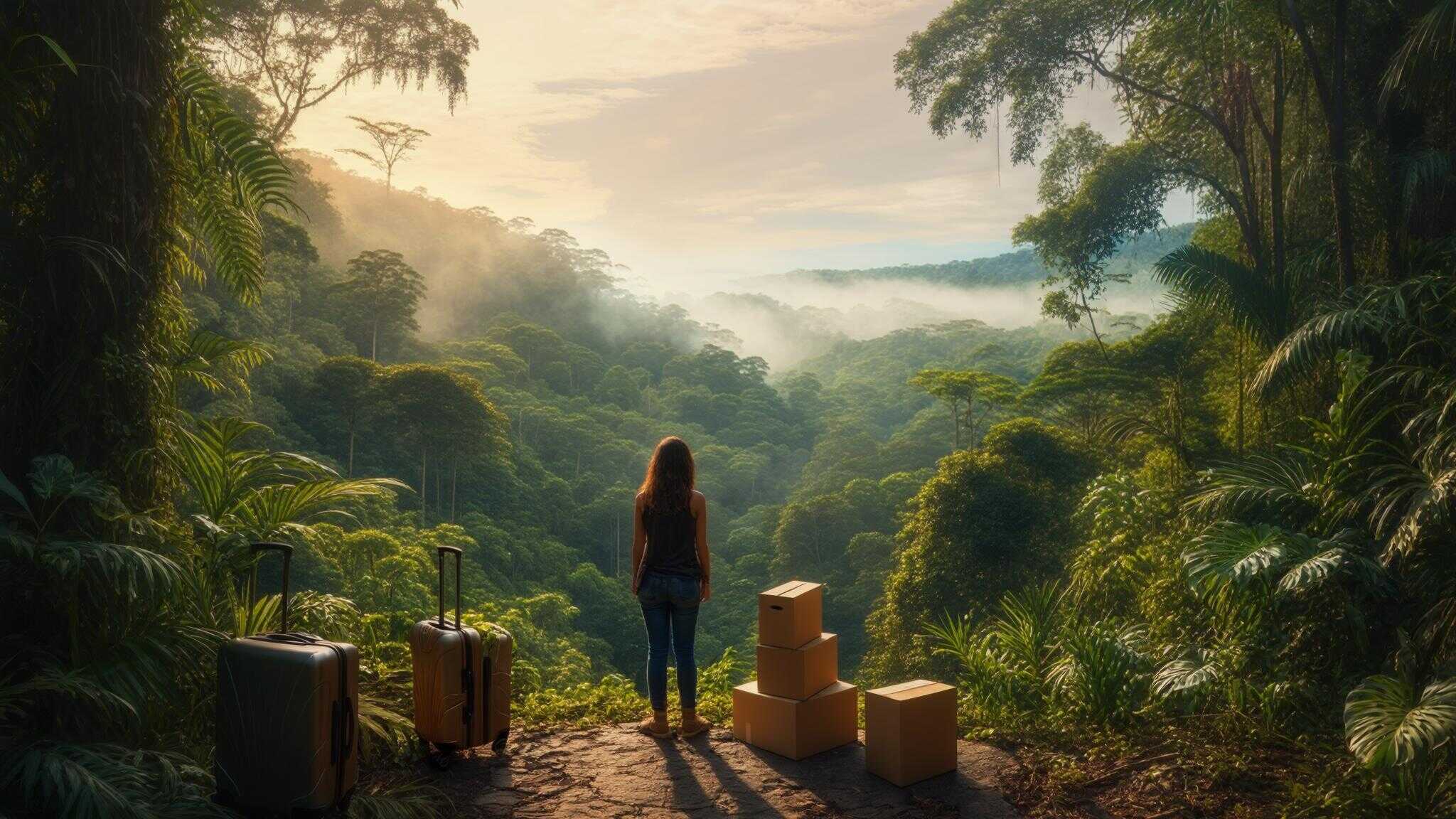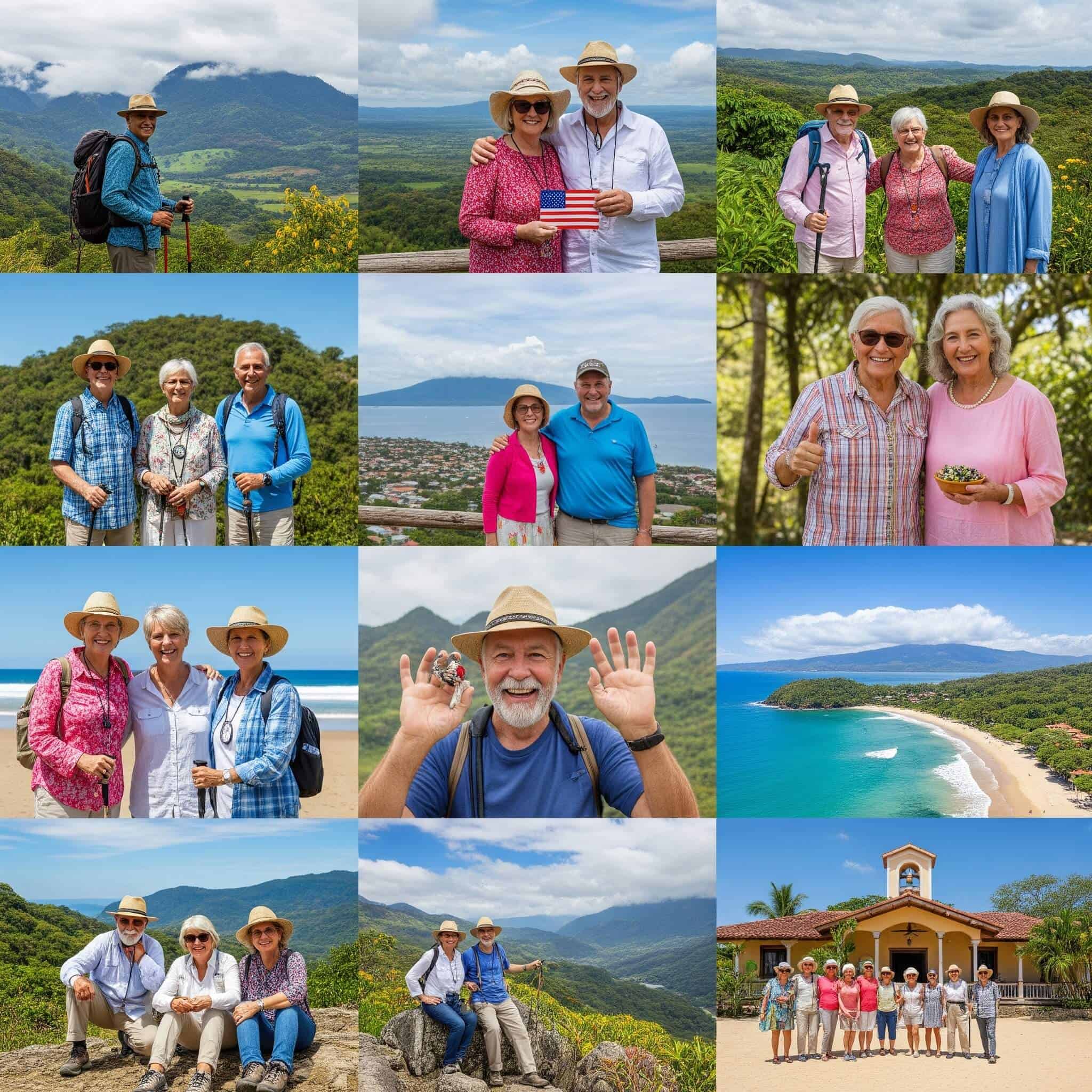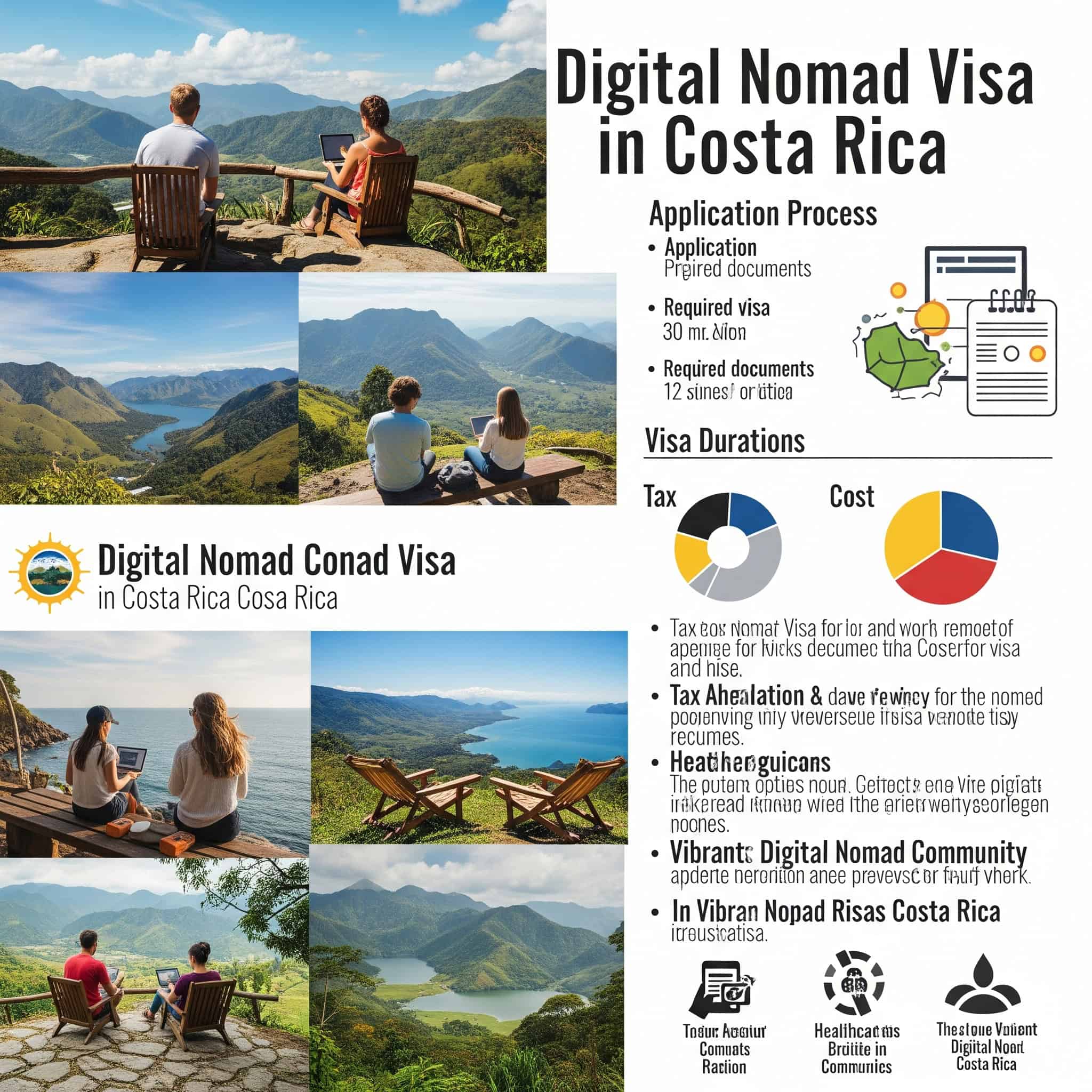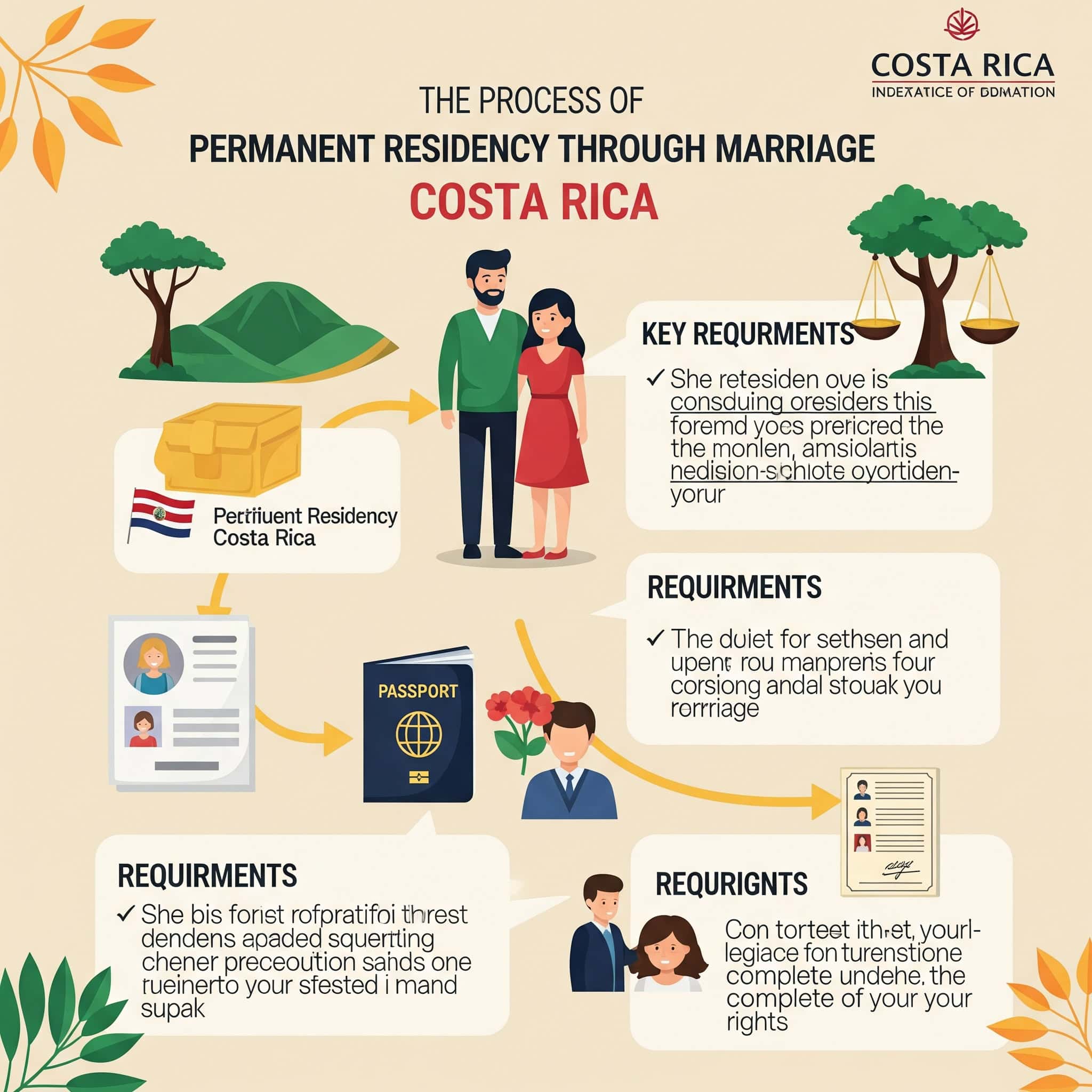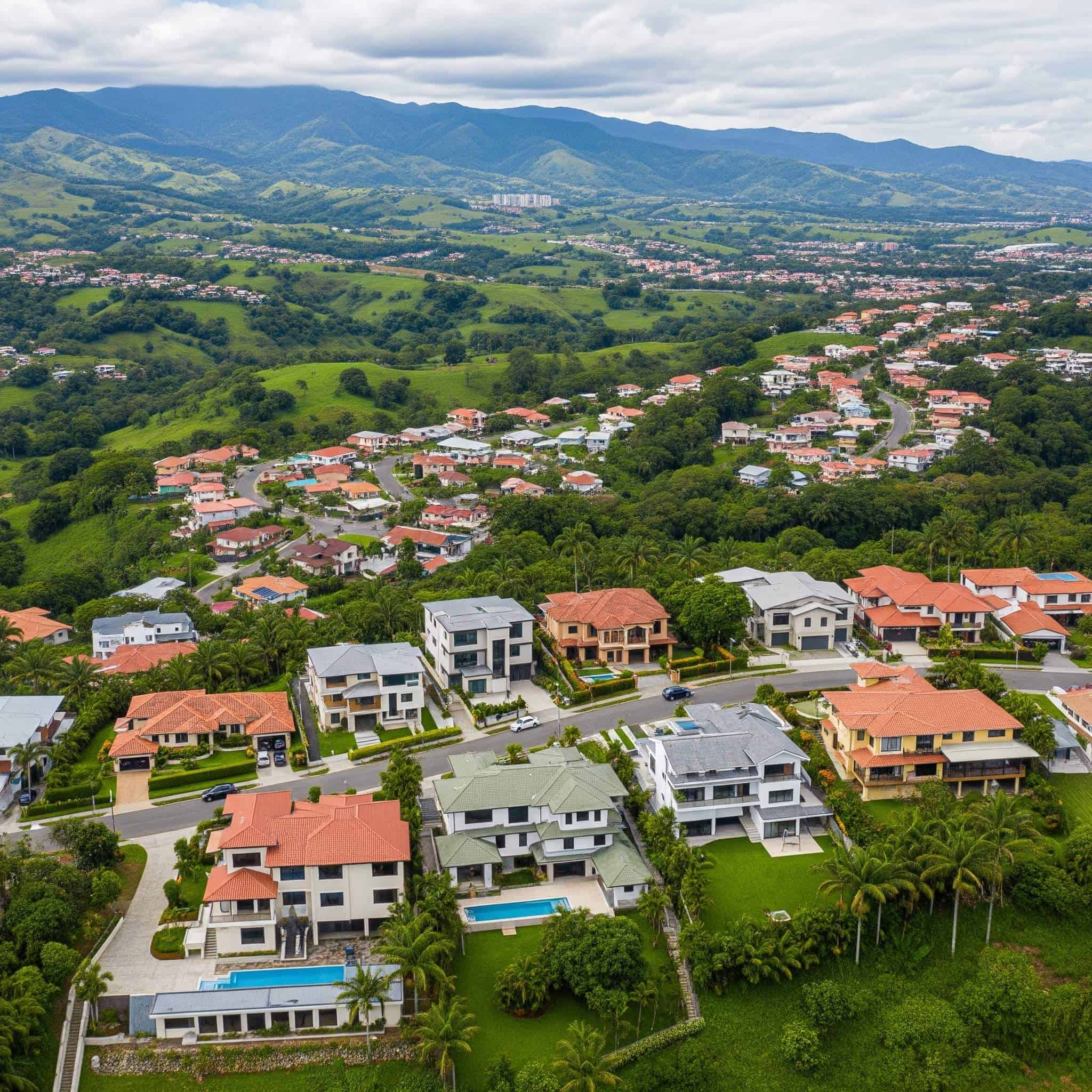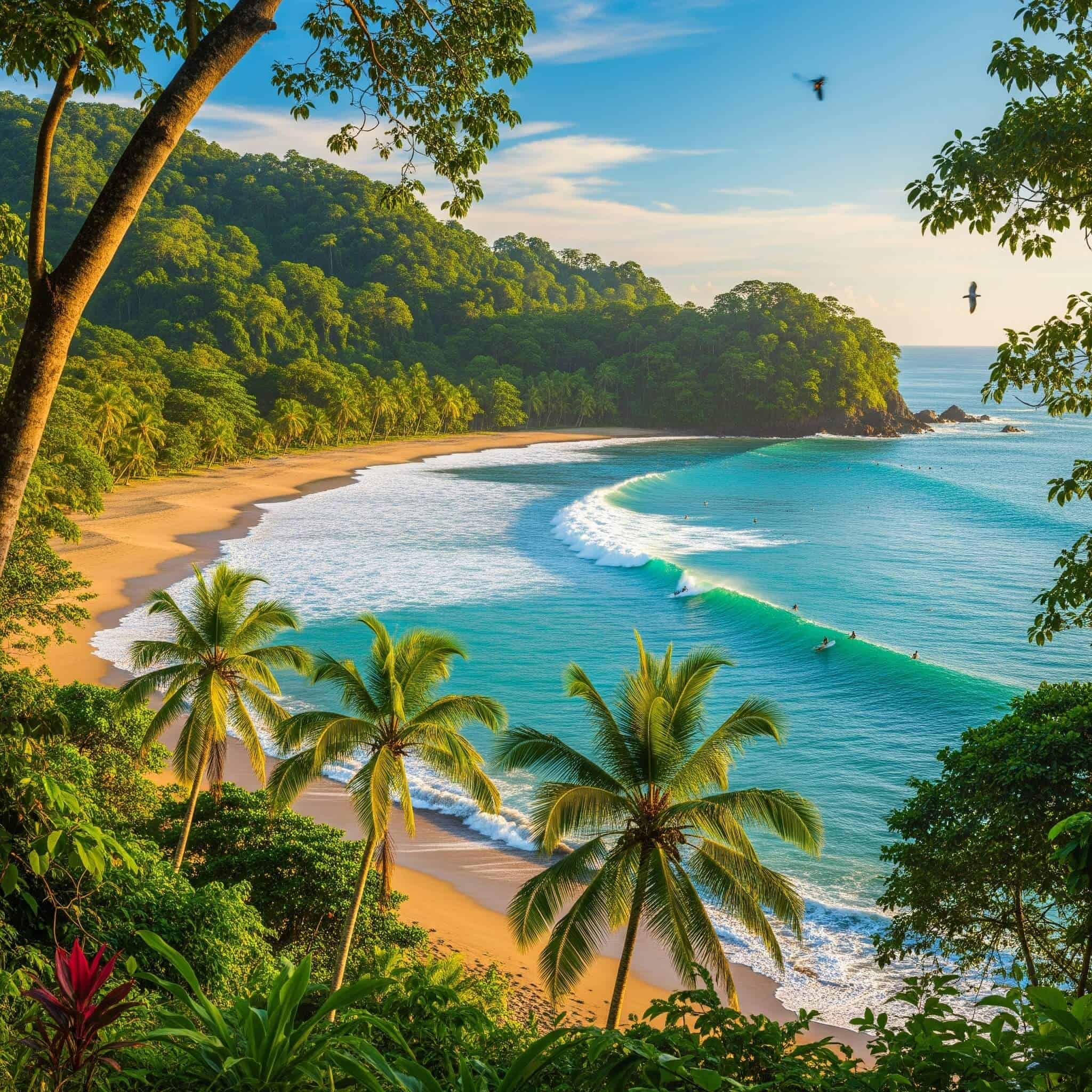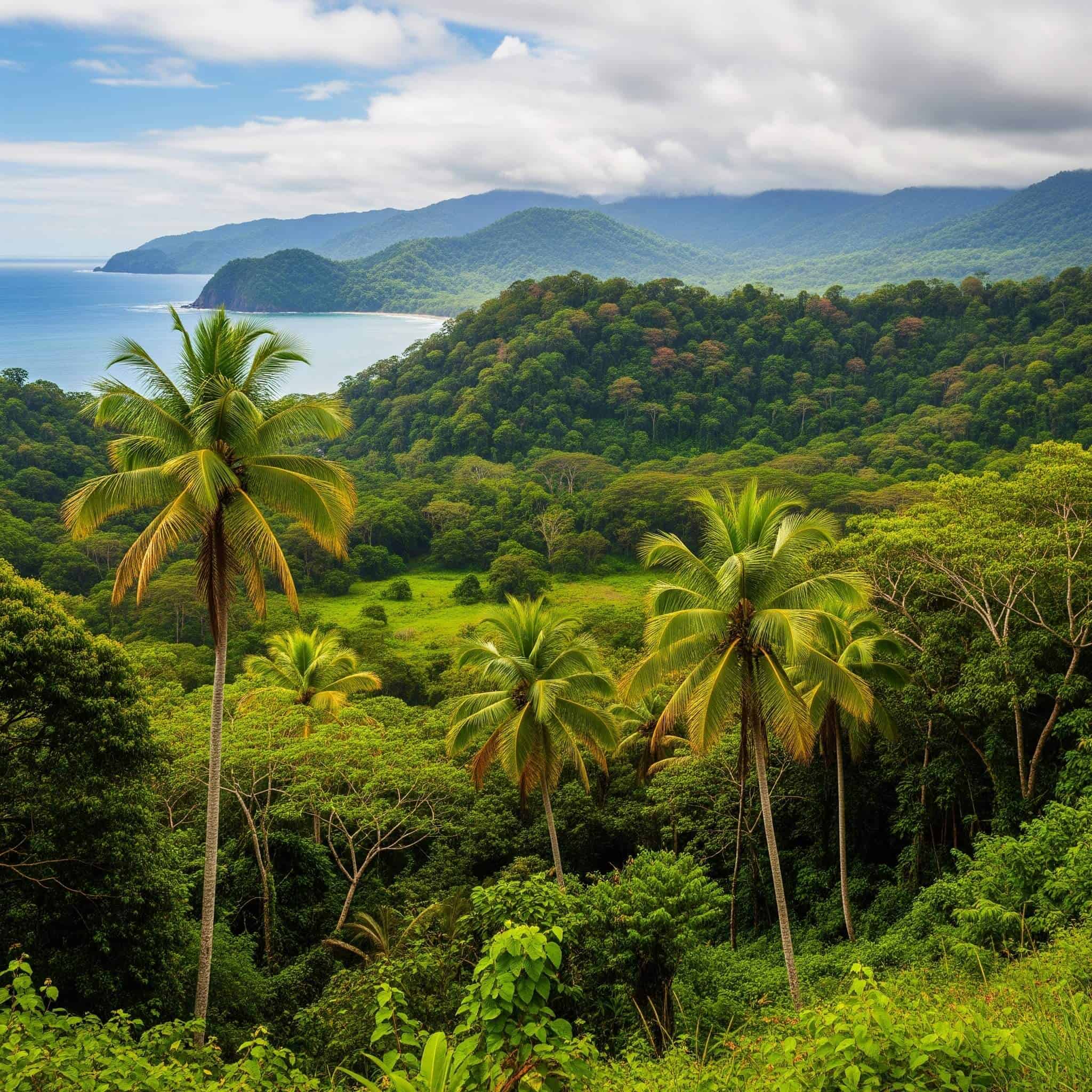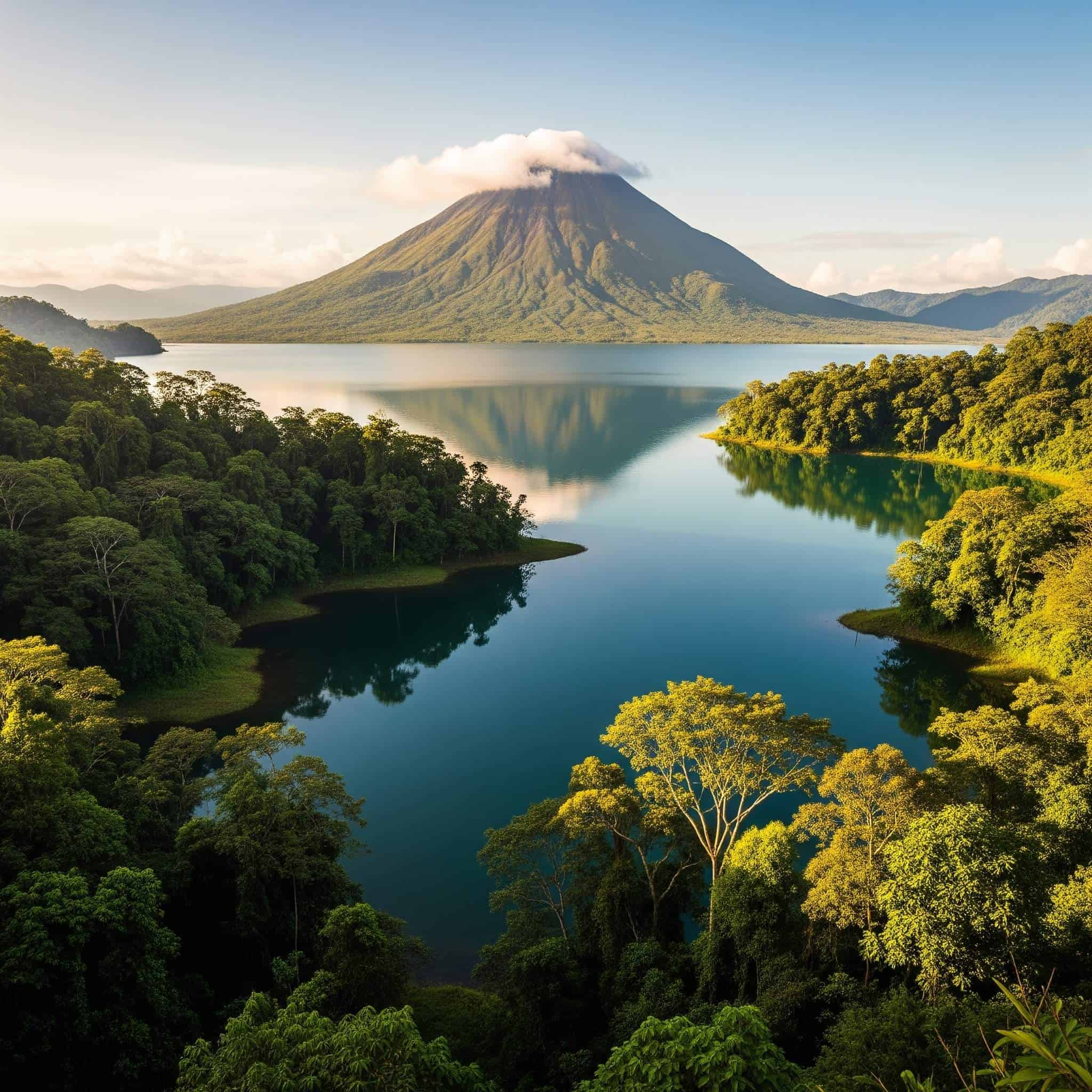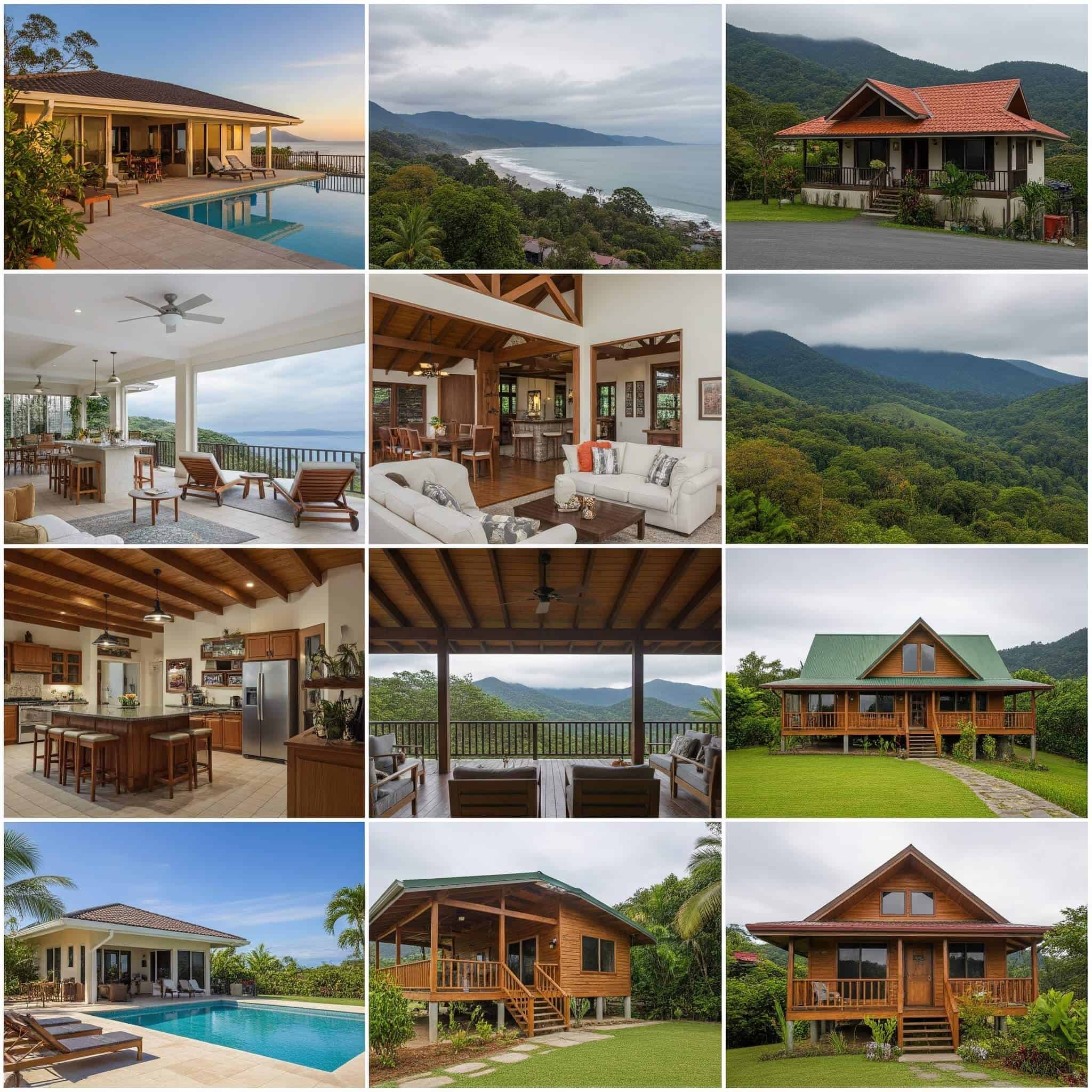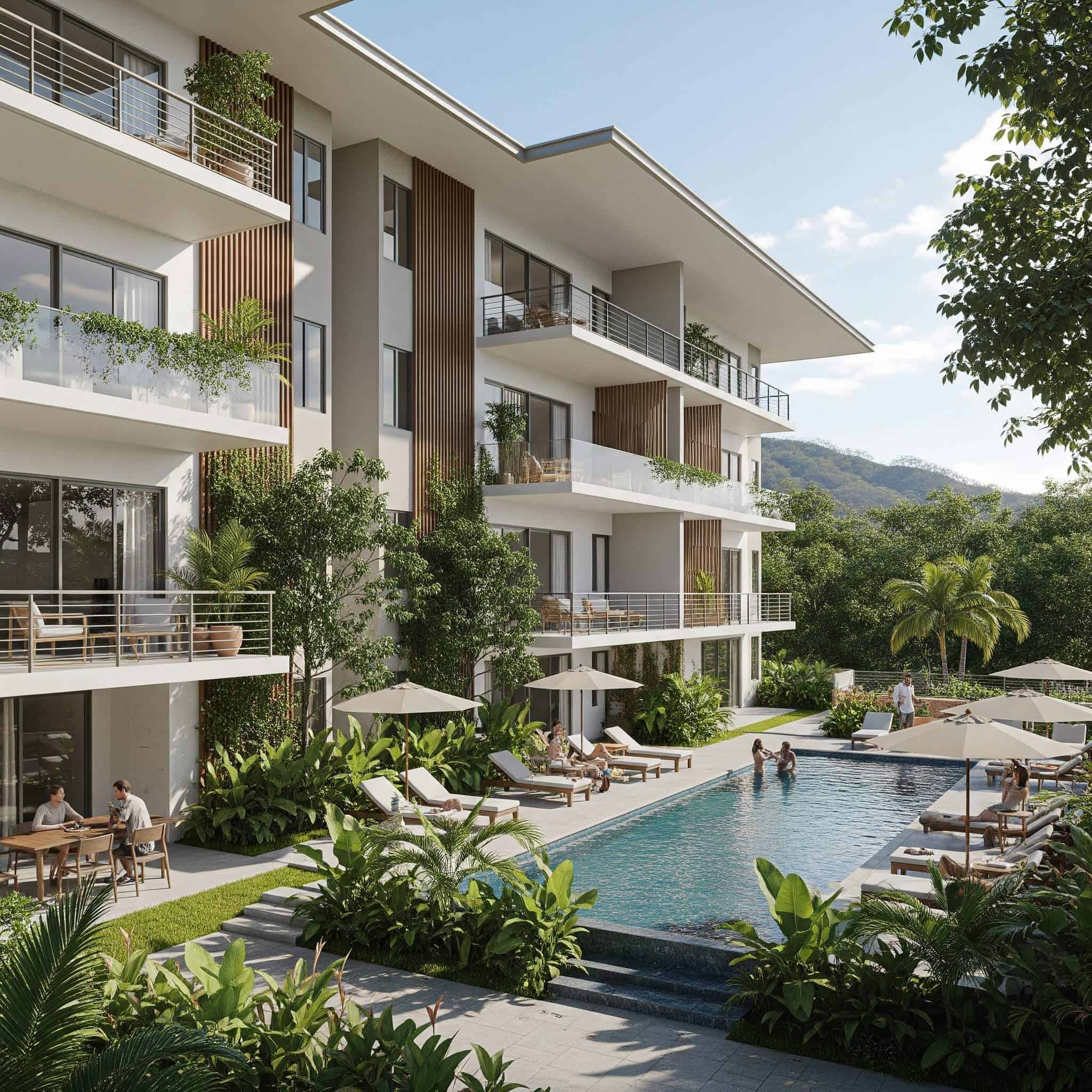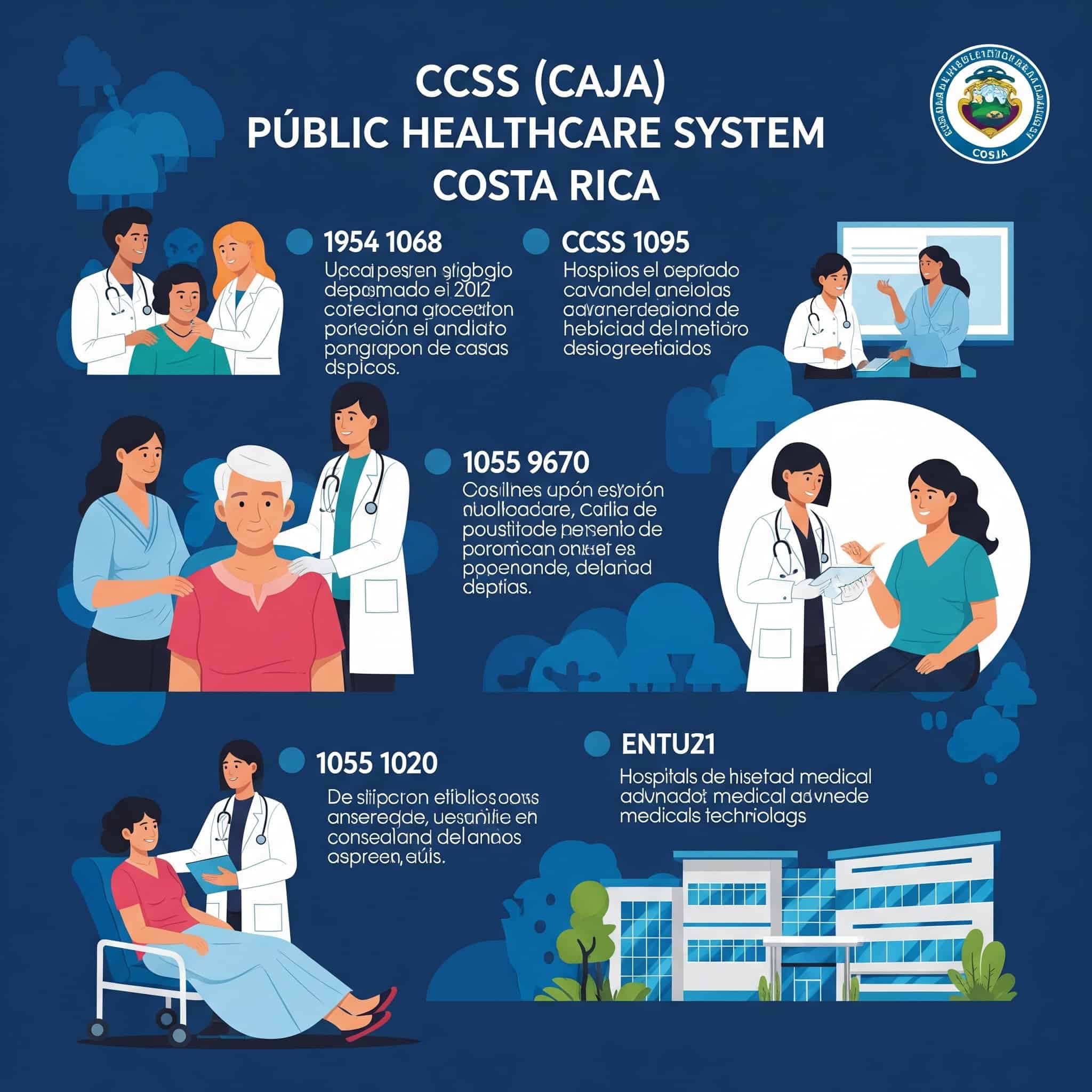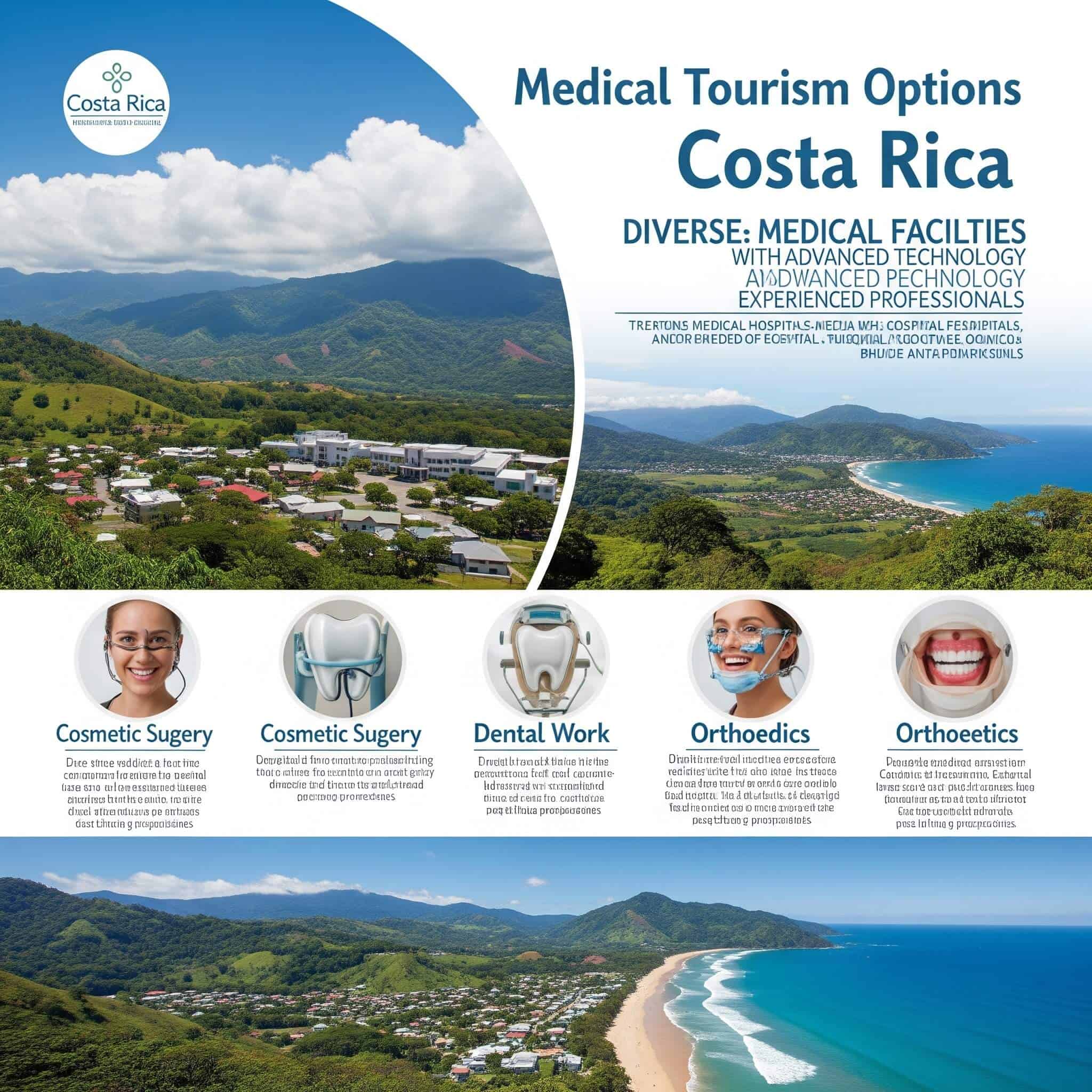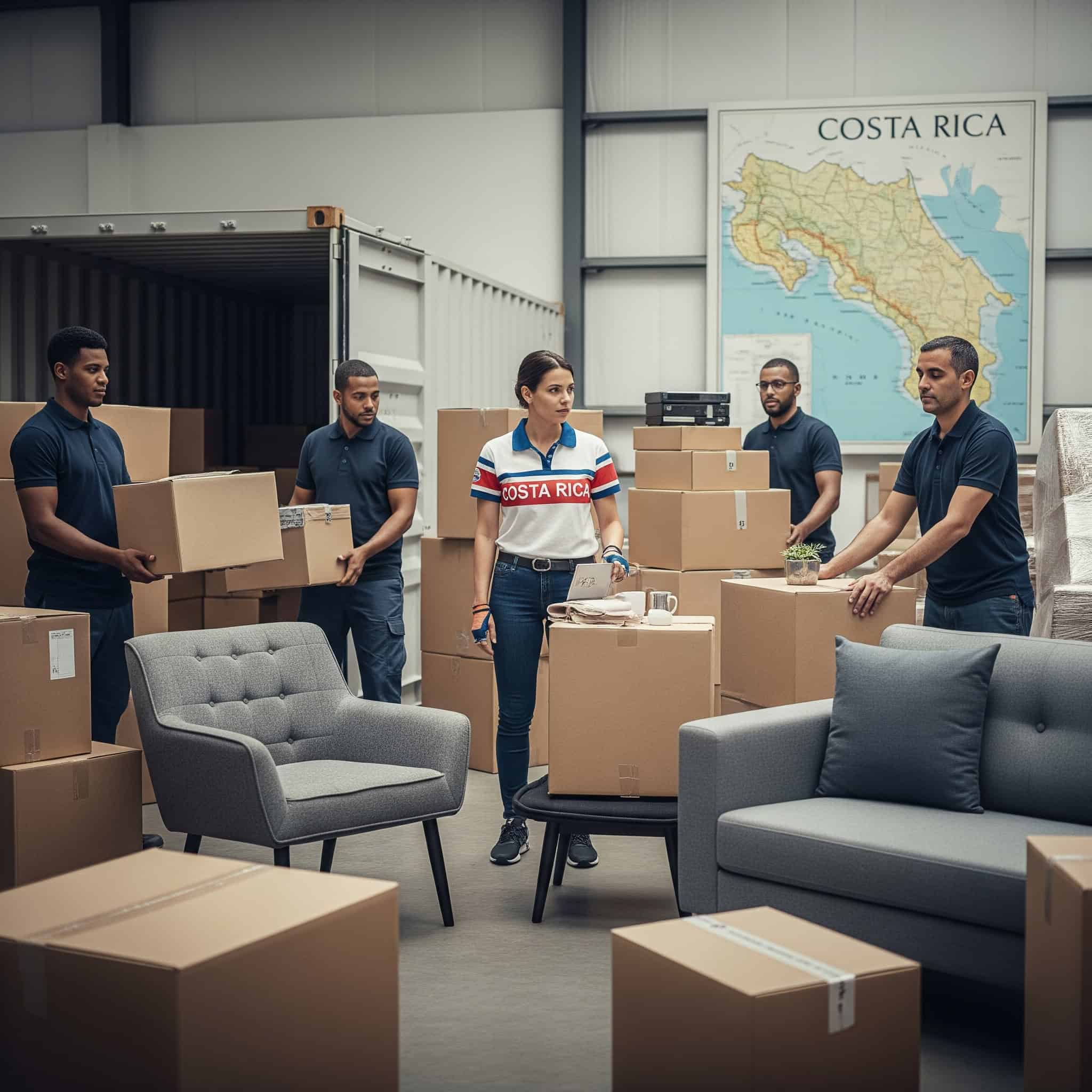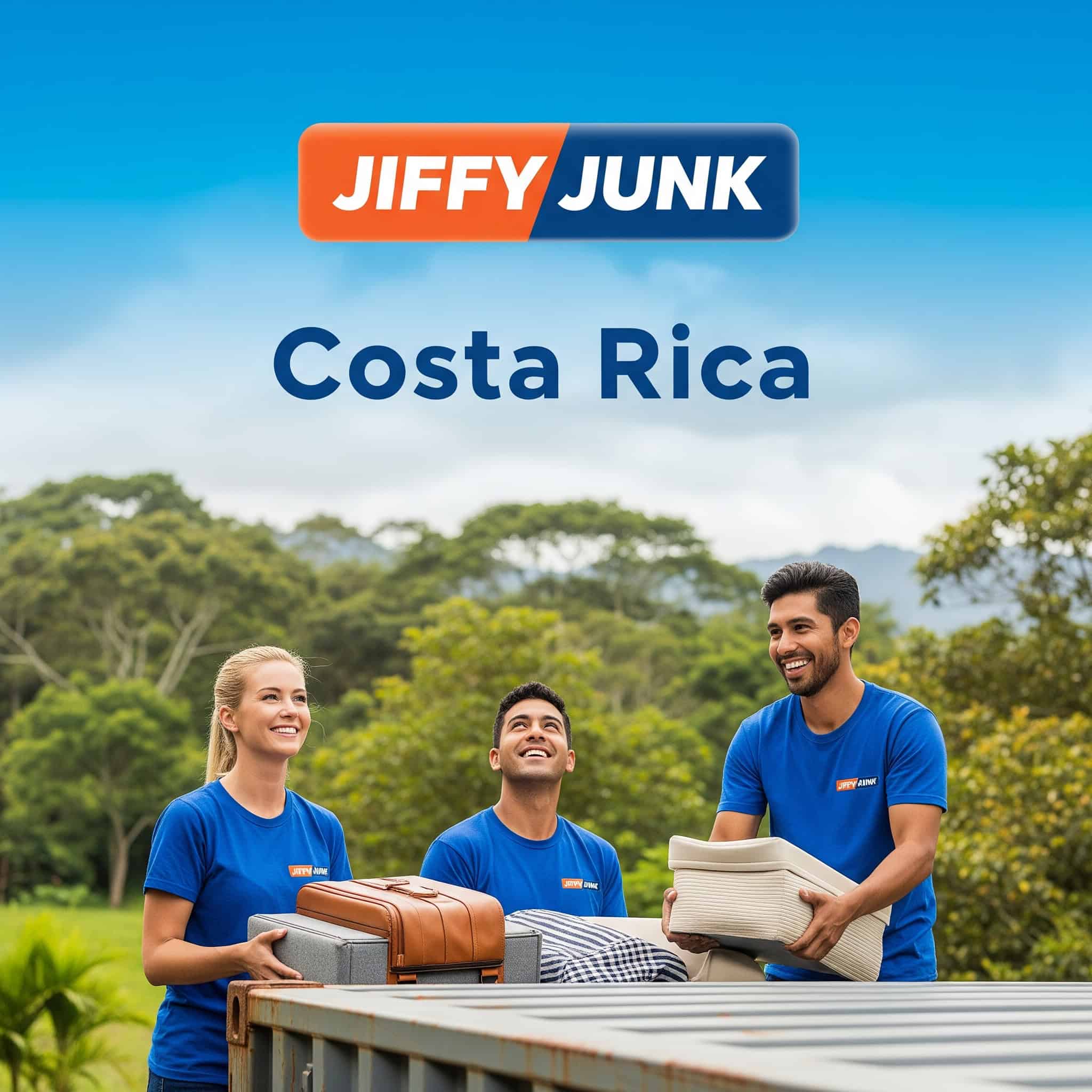Moving to Costa Rica from the US: 25 Essential Options for a Smooth Transition
Recent data shows that over 120,000 Americans now call Costa Rica home, with numbers increasing by approximately 10% annually since 2018. I’ve watched friends make this transition—some thriving immediately while others struggled with unexpected challenges. Their experiences taught me that thorough preparation makes all the difference when relocating to Costa Rica from the United States.
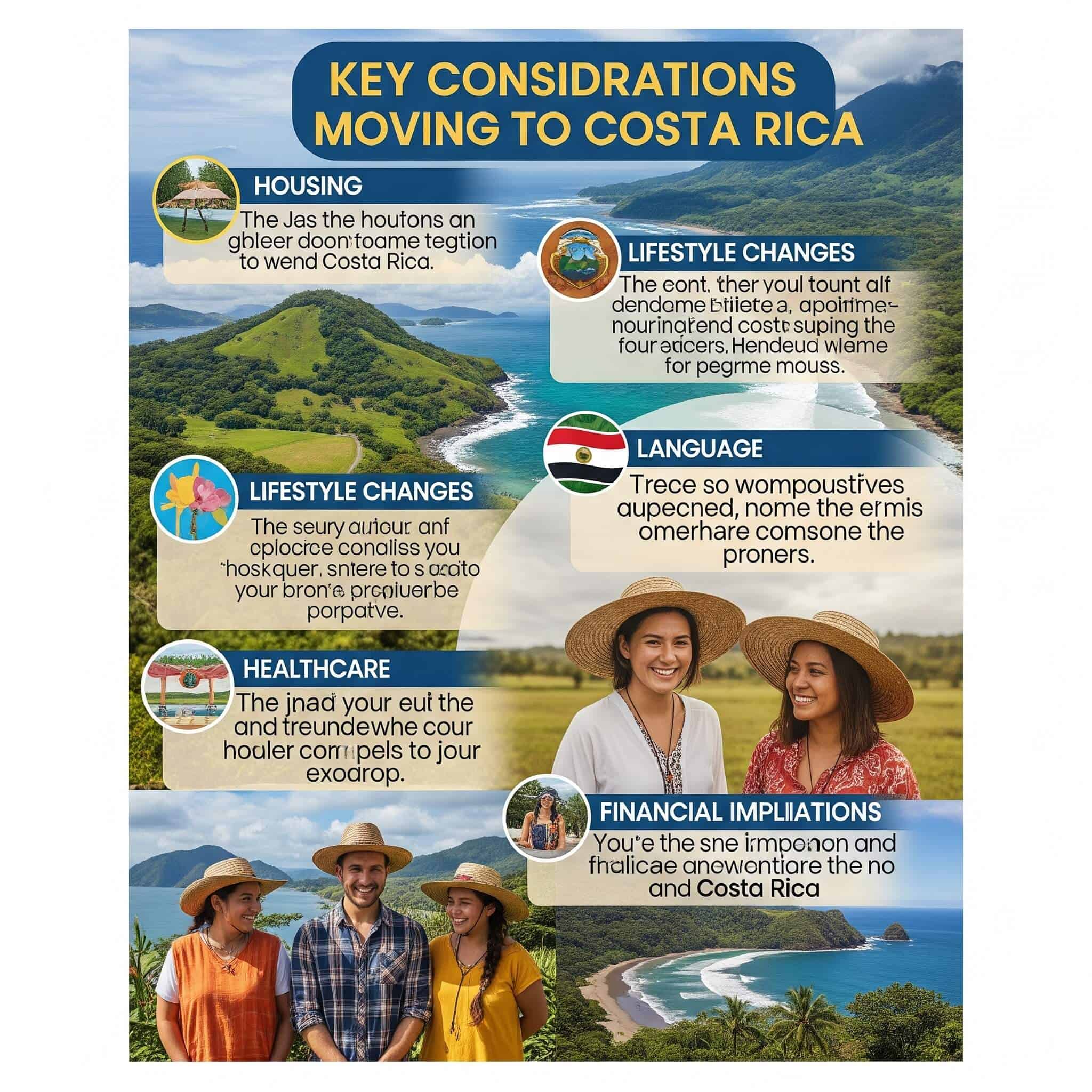
Table of Contents
Key Considerations When Moving to Costa Rica
Residency Options
Pensionado (Retiree) Residency Program
Rentista Residency Program
Inversionista (Investor) Residency Program
Digital Nomad Visa
Permanent Residency Through Marriage
Popular Expat Locations
San José Metropolitan Area
Central Valley (Escazú, Santa Ana)
Guanacaste Province
Central Pacific Coast
Southern Zone
Caribbean Coast
Lake Arenal Region
Housing Options
Long-term Rentals
Property Purchase
Condominium Living
Gated Communities
Eco-Friendly Housing
Healthcare Solutions
CCSS (Caja) Public Healthcare System
Private Health Insurance
Medical Tourism Options
Combination Healthcare Approach
Moving Logistics
Full-Service International Movers
Container Shipping
Sell and Replace Strategy
Storage Solutions
How Jiffy Junk Can Help With Your Move
Final Thoughts
Key Considerations When Moving to Costa Rica
Before packing your bags for paradise, you need to understand several critical factors about Costa Rica. Legal requirements and residency options vary significantly, with each visa type having specific financial prerequisites. The cost of living differs dramatically by region, with urban areas generally more expensive than rural locations.
Healthcare in Costa Rica combines public options (Caja) with private alternatives, giving you flexibility but requiring planning. I’ve found that learning Spanish is absolutely essential for daily life outside tourist areas – something many expats underestimate until they’re struggling to communicate with their landlord or doctor.
Climate varies dramatically across regions, from tropical beaches to cool mountains, affecting everything from your housing choices to utility costs. Infrastructure reliability, banking setup, and safety considerations should all factor into your planning process.
Key Consideration | Details | Importance |
|---|---|---|
Residency Status | Different visa options with varying requirements | Essential – determines legal right to stay |
Cost of Living | Varies by region ($1,500-$3,000/month for couples) | High – affects long-term sustainability |
Spanish Proficiency | Basic to intermediate needed outside tourist areas | Medium – improves daily life quality |
Climate Preferences | Varies from hot beaches to cool mountains | Personal – impacts housing and location choice |
Healthcare Needs | Public system vs private insurance options | Critical – especially for retirees |
• Costa Rica’s residency application processing times typically range from 6-18 months depending on category, with temporary residency requiring renewal after 1-3 years before permanent residency eligibility.
• The country’s microclimates create significant temperature variations—coastal areas average 80-90°F year-round while mountain regions like Monteverde can drop to 55°F at night, affecting everything from housing needs to utility costs.
Residency Options
1. Pensionado (Retiree) Residency Program
The Pensionado program offers retirees with guaranteed lifetime income a straightforward path to legal residency in Costa Rica. You’ll need to prove a minimum monthly pension of $1,000 from qualifying sources like Social Security or military retirement.
The application process involves background checks, financial verification, and medical examinations. Processing typically takes 6-12 months, which can test your patience. To maintain your status, you must spend at least four months yearly in Costa Rica – a requirement I’ve seen some expats struggle with when family emergencies arise back home.
This option provides full access to the public healthcare system but doesn’t permit employment. For many retirees I know, this restriction isn’t an issue, but it’s worth considering if you might want to work part-time.
John and Mary Thompson, both 67, applied for Pensionado residency using their combined Social Security income of $2,800 monthly. They gathered apostilled birth certificates, marriage license, and police clearance documents from their home state of Arizona, and submitted their application in March 2022. After 9 months of processing and two in-person interviews at the Costa Rican consulate in Los Angeles, they received approval in December 2022. They now live in Grecia, where they’ve joined the local Caja healthcare system and participate in a weekly language exchange to improve their Spanish.
• Application requires apostilled birth certificate, marriage certificate (if applicable), police clearance from your home country, and proof of fingerprinting through INTERPOL.
• Income verification must demonstrate the pension is guaranteed for life—temporary income sources or fixed-term annuities typically don’t qualify.
2. Rentista Residency Program
The Rentista program targets non-retirees with stable income sources. You must prove $2,500 monthly income for at least two years, often secured through a bank deposit of $60,000+ generating interest. This option appeals to younger expats with investment income or those who aren’t yet retirement age.
Like the Pensionado program, you must spend at least four months yearly in Costa Rica to maintain status. The application process includes similar documentation requirements and processing times of 6-12 months.
I’ve met several digital entrepreneurs who chose this visa category because it provides flexibility while they build their online businesses. The main challenge they faced was establishing the required income stream in a way that satisfied immigration officials.
• Most applicants establish a Costa Rican bank certificate of deposit (CD) of approximately $60,000 that generates the required monthly income through interest.
• Unlike Pensionado, Rentista status requires renewal after two years with proof the income source remains stable.
3. Inversionista (Investor) Residency Program
The Inversionista program requires a minimum $150,000 investment in Costa Rican business, property, or government-approved sectors. Your investment must demonstrably benefit the local economy through job creation or economic development.
Documentation includes business plans, investment proof, and background checks. This option appeals to entrepreneurs and business-minded expats who want to actively participate in the local economy. Processing typically takes 8-14 months, which can feel excruciatingly slow when you’re eager to launch your business.
Unlike other residency categories, this option includes work permission related to your investment. I’ve watched friends transform their passion projects into thriving businesses through this program, though navigating the bureaucracy required significant patience.
• Investments must be registered with PROCOMER (Costa Rica’s Foreign Trade Corporation) and maintain active status throughout the residency period.
• Real estate investments qualify only if they’re registered as commercial property or tourism projects—residential property purchases alone don’t meet requirements.
4. Digital Nomad Visa
Implemented in 2021, this one-year visa (renewable once) requires proof of stable income of at least $3,000/month for individuals or $4,000/month for families from foreign sources. The application process is streamlined compared to other residency options, typically processing within 2-3 months.
This visa offers tax exemptions on foreign income and import duty exemptions for work equipment. It’s ideal for remote workers but doesn’t provide a path to permanent residency.
I’ve connected with several digital nomads who chose Costa Rica specifically because of this visa program. They appreciate the quick processing time and tax benefits, though some struggle with the lack of a long-term residency pathway.
• Application requires proof of health insurance with minimum coverage of $50,000 for medical expenses and $100,000 for evacuation costs.
• Income verification must demonstrate consistent earnings for the previous 12 months through bank statements, employment contracts, or client invoices.
5. Permanent Residency Through Marriage
Marrying a Costa Rican citizen provides a path to permanent residency without the financial requirements of other programs. Documentation includes marriage certificate, background checks, and proof of relationship legitimacy.
Processing typically takes 12-18 months, with interviews to verify the relationship’s authenticity. Immigration officials take fraud prevention seriously, conducting home visits and separate interviews with spouses.
This option has no minimum income requirements and includes work permission. Family integration often accelerates cultural adaptation. After three years of marriage, you become eligible for Costa Rican citizenship.
• Immigration officials conduct home visits and separate interviews with both spouses to verify cohabitation and relationship authenticity.
• The foreign spouse must maintain the marriage for a minimum of three years before applying for citizenship, even if permanent residency is granted earlier.
Residency Type | Financial Requirement | Processing Time | Work Permission | Path to Permanency |
|---|---|---|---|---|
Pensionado | $1,000/month lifetime pension | 6-12 months | No | After 3 years |
Rentista | $2,500/month for 2+ years | 6-12 months | No | After 3 years |
Inversionista | $150,000+ investment | 8-14 months | Yes (related to investment) | After 3 years |
Digital Nomad | $3,000/month individual, $4,000/month family | 2-3 months | Yes (remote only) | No direct path |
Marriage | None | 12-18 months | Yes | After 3 years |
Popular Expat Locations
6. San José Metropolitan Area
As Costa Rica’s capital and largest urban center, San José offers modern amenities, shopping, international schools, and the country’s best healthcare facilities. Housing ranges from $500-$1,500/month for rentals, with options from basic apartments to luxury condos.
The area provides excellent public transportation and proximity to international airports. Moderate temperatures (65-80°F) year-round with less humidity than coastal regions make it climatically comfortable.
I’ve found that traffic congestion and higher crime rates are significant considerations for daily life here. Many expats I know choose San José initially to ease their transition with familiar amenities and services, then relocate to other areas once they’ve adjusted to Costa Rican life.
• The metropolitan area encompasses seven provinces including Alajuela, Heredia, and Cartago, each with distinct microeconomies and cost structures.
• Public transportation includes an extensive bus network with over 200 routes and the urban train system (INCOFER) connecting major suburbs, though service reliability varies.
7. Central Valley (Escazú, Santa Ana)
When planning your relocation, consider decluttering your home before moving to reduce shipping costs and simplify your transition.
These upscale suburbs west of San José offer cooler climates (65-75°F year-round), modern amenities, and established international communities. Housing costs range from $800-$3,000/month, reflecting the premium nature of these areas.
The region features international schools, upscale shopping, and excellent healthcare but at premium prices compared to other regions. These communities provide a comfortable transition with many English-speaking services while still offering authentic Costa Rican culture.
I particularly appreciate how the higher elevation creates ideal year-round temperatures without air conditioning needs. Friends who’ve settled here love the balance between convenience and natural beauty, with mountain views and coffee plantations surrounding modern developments.
• Escazú contains the country’s highest concentration of diplomatic residences and international businesses, creating a multilingual environment with services in English, French, and German.
• The microclimate results from elevation (3,800-4,500 feet above sea level) and mountain protection, creating significantly different weather patterns than areas just 10-15 miles away.
8. Guanacaste Province (Tamarindo, Nosara)
This Pacific coast region offers beautiful beaches, consistent sunshine, and growing expat communities. Popular with surfers and yoga enthusiasts, housing ranges from $600-$2,500/month depending on proximity to the beach and amenities.
The dry tropical climate (with distinct dry season December-April) appeals to sun-seekers, though water shortages can occur in dry months. I’ve experienced firsthand how the tourist-oriented economy creates seasonal fluctuations in prices and crowds.
Healthcare access is limited, with major medical needs requiring travel to larger cities. This is a significant consideration for older expats or those with chronic conditions.
Lisa Rodriguez, a 42-year-old yoga instructor from California, moved to Nosara in 2021. She initially rented a one-bedroom apartment for $800/month while exploring the area. After six months, she found a small house with ocean views for $1,200/month on a two-year lease. She teaches at a local yoga studio three days a week and offers private classes to tourists during high season (December-April), which provides sufficient income during those months. During the rainy season (May-November), she supplements her income with online classes for her US clients. She maintains private health insurance ($120/month) and travels to San José twice yearly for specialized medical appointments.
• Annual rainfall averages 30-60 inches but is concentrated in May-November, with December-April often receiving less than 1 inch monthly.
• Water infrastructure challenges stem from aquifer depletion rates exceeding replenishment during dry season, leading to restrictions and occasional service interruptions.
9. Central Pacific Coast (Jacó, Manuel Antonio)
This accessible coastal region combines beach living with proximity to San José (1-2 hours). Housing costs range from $500-$2,000/month, with significant variation based on ocean views and property condition.
The area offers vibrant nightlife, diverse dining, and nature access, though higher humidity and tourist crowds are considerations. The climate is hot and humid (80-90°F) with significant rainfall May-November.
Infrastructure is generally reliable with occasional flooding during rainy season. I’ve noticed the tourist-driven economy creates both opportunities and challenges for permanent residents. Friends who’ve settled here appreciate the balance between accessibility and beach lifestyle, though some struggle with the seasonal tourist influx.
• Coastal erosion affects beachfront properties at rates of 1-3 meters annually in some areas, requiring setback considerations for construction.
• The region experiences microbursts of intense rainfall (4-6 inches in 2-3 hours) during rainy season, creating flash flooding risks in low-lying areas.
10. Southern Zone (Dominical, Uvita)
This less-developed region offers pristine beaches, lush jungles, and a quieter lifestyle. Housing ranges from $400-$1,500/month, with remarkable values available for those willing to live simply.
The area provides authentic Costa Rican culture and abundant wildlife but comes with more rain (80-200 inches annually) and fewer modern amenities. I’ve visited friends here who’ve embraced the natural lifestyle, though they acknowledge the challenges of limited shopping options and occasional power outages.
Healthcare access is limited, with major care requiring significant travel. The lower cost of living attracts those seeking a simpler lifestyle closer to nature. Strong Spanish language skills are more important here than in tourist-heavy areas.
• The Ballena Marine National Park creates building restrictions within 200 meters of high tide line, affecting property availability and development patterns.
• Soil composition (primarily clay with high mineral content) creates unique construction challenges requiring specialized foundations to prevent shifting during heavy rainfall periods.
11. Caribbean Coast (Puerto Viejo, Cahuita)
This culturally distinct region offers Afro-Caribbean influence, laid-back atmosphere, and beautiful beaches. Housing costs range from $400-$1,200/month, with charming wooden homes nestled in tropical gardens.
The area features unique cuisine, music, and culture but experiences high rainfall (up to 200 inches annually) and more limited healthcare access. The Caribbean coast has different weather patterns than the Pacific side, often sunny when the Pacific experiences rain.
I’ve spent time in Puerto Viejo and found the cultural diversity refreshing – a different experience than the more developed Pacific regions. The relaxed pace of life appeals to those seeking an alternative to mainstream tourism areas, though infrastructure challenges require adaptability.
• Rainfall patterns differ from the Pacific coast, with February-March and September-October often being the driest periods rather than the traditional December-April dry season.
• Building codes accommodate the higher humidity (averaging 85-95%) with specific ventilation requirements and material restrictions to prevent mold growth.
12. Lake Arenal Region
This inland area offers stunning lake views, cooler temperatures (60-75°F), and proximity to Arenal Volcano. Housing ranges from $500-$1,500/month, with many properties featuring panoramic views of the lake and volcano.
The region provides outdoor activities, bird watching, and fishing opportunities but comes with frequent rain and wind, plus more limited shopping and healthcare options. The 33-square-mile lake creates a unique microclimate with consistent temperatures year-round.
Friends who’ve settled here rave about the natural beauty and comfortable climate, though they acknowledge the need for a vehicle and occasional trips to larger towns for supplies. The area attracts nature lovers and those seeking a quieter lifestyle away from tourist centers.
• Wind patterns across the lake create consistent 15-25 mph winds from November-April, making the region Central America’s premier windsurfing destination but requiring specialized home design.
• The volcanic soil composition provides exceptional agricultural fertility but requires specialized foundation engineering to accommodate expansion/contraction during wet/dry cycles.
Region | Climate | Monthly Rental Range | Expat Population | Healthcare Access | Best For |
|---|---|---|---|---|---|
San José Metro | Moderate (65-80°F) | $500-$1,500 | Large | Excellent | Urban amenities, healthcare |
Central Valley | Cool (65-75°F) | $800-$3,000 | Large | Excellent | Comfort, international community |
Guanacaste | Hot, dry (75-95°F) | $600-$2,500 | Large | Limited | Beaches, sunshine, surfing |
Central Pacific | Hot, humid (80-90°F) | $500-$2,000 | Medium | Good | Beach access, convenience |
Southern Zone | Hot, humid (75-90°F) | $400-$1,500 | Small | Limited | Nature, authenticity, value |
Caribbean Coast | Hot, humid (75-90°F) | $400-$1,200 | Small | Limited | Cultural diversity, beaches |
Lake Arenal | Cool (60-75°F) | $500-$1,500 | Small | Limited | Nature, cooler climate |
Housing Options
13. Long-term Rentals
Renting before buying is highly recommended when moving to Costa Rica. Month-to-month leases start around $400 in rural areas to $2,500+ in premium locations. Benefits include flexibility and lower commitment, though rental laws favor landlords and may require Spanish-language contracts.
Working with reputable agencies is advisable, especially if your Spanish isn’t fluent. I’ve seen friends struggle with informal rental agreements that lacked proper documentation, leading to disputes later.
Rental properties range from basic Tico-style homes to luxury villas. Utilities are sometimes included but often separate. Security deposits typically equal one month’s rent, and you should document property condition thoroughly before moving in.
• Costa Rican rental law (Ley de Arrendamientos Urbanos y Suburbanos) allows landlords to increase rent annually by up to 15% regardless of inflation rates.
• Utility connections often remain in the property owner’s name, creating potential liability issues if bill payment verification isn’t documented in the lease agreement.
14. Property Purchase
Before purchasing property, many expats conduct a thorough estate cleanout of their US home to determine what’s worth shipping versus selling.
Foreigners have the same property rights as locals in Costa Rica (except in maritime zones). Costs range from $100,000 for simple homes to $500,000+ for luxury properties. Benefits include potential appreciation and customization, though the process requires careful title searches and professional legal assistance.
Property taxes are remarkably low (approximately 0.25% of registered value annually), but transaction costs include roughly 3-4% in transfer taxes and legal fees. Due diligence is essential to verify clean title and avoid encumbrances.
I’ve watched friends navigate the property purchase process with varying degrees of success. Those who worked with reputable attorneys and conducted thorough due diligence generally had positive experiences, while those who rushed faced unexpected complications.
Michael and Susan Baker purchased a three-bedroom home in Atenas after renting in the area for 18 months. Working with a bilingual attorney, they conducted a thorough title search that revealed an undisclosed easement across the property. They negotiated a $15,000 price reduction based on this finding, ultimately paying $235,000 for the property. Their closing costs included 1.5% transfer tax, 1.25% in legal fees, and 0.5% in registration costs. They now pay annual property taxes of approximately $600 and have invested an additional $25,000 in renovations including solar panels that reduced their monthly electricity costs by 70%. Their due diligence process took approximately 6 weeks from initial offer to closing.
• The Maritime Zone Law (Ley Marítima Terrestre) restricts foreign ownership within 200 meters of high tide line, though concessions are available through municipal governments.
• Property registration occurs through the National Registry (Registro Nacional) using a folio real system that assigns each property a unique identifier number tracking all transactions and encumbrances.
15. Condominium Living
Condominiums are popular in urban and beach areas, offering security, amenities, and community. Purchase prices range from $80,000-$300,000+ with monthly HOA fees of $200-$600. Benefits include lower maintenance and built-in community, though HOA rules can be restrictive and fees may increase unexpectedly.
Condos often include amenities like pools, gyms, and security services. They provide a middle ground between renting and full property ownership, with shared maintenance responsibilities but individual title.
I’ve found that condo living works particularly well for part-time residents and those who travel frequently, as security and maintenance continue during absences. Friends who’ve chosen condos appreciate the social aspects and amenities, though some chafe at HOA restrictions.
• Condominium governance falls under the Regulatory Law of Condominium Property (Ley Reguladora de la Propiedad en Condominio), requiring formal administrative structures and financial transparency.
• HOA fee structures typically divide into ordinary quotas (regular maintenance) and extraordinary quotas (capital improvements), with voting rights proportional to unit size.
16. Gated Communities
Gated communities are common in expat-heavy areas, offering enhanced security and often including amenities like pools and tennis courts. Homes typically range from $150,000-$500,000+ depending on location and size.
Benefits include security and community, though they can isolate residents from authentic Costa Rican culture and often come with high HOA fees. These communities provide peace of mind for those concerned about security but may create a cultural bubble.
Management quality varies significantly between developments. I’ve observed that the best communities foster integration with local culture through events and activities, while others function as isolated enclaves with little connection to surrounding areas.
• Security infrastructure typically includes perimeter fencing with electric monitoring, 24-hour guard stations, and CCTV systems with costs distributed across all residents.
• Water and electrical systems often include community backup generators and water storage tanks to mitigate service interruptions common in developing areas.
17. Eco-Friendly Housing
Sustainable housing options are increasingly popular in Costa Rica, including solar power, rainwater collection, and natural building materials. Costs vary widely from $100,000 for simple designs to $400,000+ for luxury eco-homes.
Benefits include lower utility costs and environmental impact, though initial construction costs may be higher. Costa Rica’s commitment to sustainability makes it an ideal location for eco-conscious living.
I’ve toured several impressive eco-homes that harmonize with the natural environment while providing modern comforts. These innovative housing solutions work with the local climate rather than against it, resulting in comfortable living spaces that require minimal energy for cooling.
• Building certification through RESET (Requirements for Sustainable Buildings in the Tropics) provides standardized sustainability metrics specific to tropical environments.
• Off-grid systems typically require minimum 5kW solar arrays with 10-15kWh battery storage capacity to accommodate seasonal variations in sun exposure.
Healthcare Solutions
18. CCSS (Caja) Public Healthcare System
The Caja is mandatory for legal residents, costing approximately 7-11% of declared income monthly. It provides comprehensive coverage including preventative care, hospitalization, and medications.
Benefits include affordability and broad coverage, though wait times can be long and language barriers exist at many facilities. The system operates through regional clinics (EBAIS) for primary care and hospitals for specialized treatment.
Coverage begins immediately upon enrollment with no exclusions for pre-existing conditions. I’ve used the Caja system for routine care and found the quality generally good, though navigating the bureaucracy requires patience and at least basic Spanish skills.
• The three-tiered system consists of EBAIS (primary care clinics), regional clinics (secondary care), and national hospitals (tertiary care) with formal referral protocols between levels.
• Medication formulary includes approximately 1,500 medications provided at no additional cost, though newer treatments may require special authorization or private purchase.
19. Private Health Insurance
Many expats use their time preparing for Costa Rica to dispose of old appliances and other belongings that won’t be making the international move.
Private health insurance options include international plans (Blue Cross, Cigna) or local providers (INS, PAN-American). Costs range from $60-$250 monthly depending on age and coverage. Benefits include faster access and English-speaking providers, though pre-existing conditions may not be covered or come with waiting periods.
Private facilities concentrate in urban areas and tourist destinations. Plans typically cover hospitalization, outpatient care, and emergency services with varying deductibles and co-payments.
I’ve found that many expats maintain private insurance alongside Caja coverage for maximum flexibility. The private healthcare system in Costa Rica offers excellent quality at a fraction of US costs, with modern facilities and often US-trained physicians.
• Local insurance through INS (Instituto Nacional de Seguros) offers the “Medical Insurance for Foreign Residents” plan with coverage caps of $200,000 annually and $2 million lifetime.
• International policies typically require upfront payment for services with reimbursement processing times averaging 4-6 weeks, while local policies often provide direct billing arrangements.
20. Medical Tourism Options
Costa Rica is a leading medical tourism destination, with procedures costing 40-70% less than in the US. Popular services include dental work, cosmetic surgery, and orthopedic procedures.
Benefits include significant savings and high-quality care, though follow-up care coordination can be challenging. Many facilities are JCI-accredited (Joint Commission International) with US-trained physicians.
The country’s proximity to the US makes travel manageable for procedures requiring short stays. I know several expats who regularly host friends and family coming to Costa Rica specifically for medical procedures, combining treatment with vacation time.
• Major medical tourism facilities include CIMA Hospital, Hospital Clínica Bíblica, and Hospital La Católica, all maintaining JCI accreditation with bilingual staff and international patient departments.
• Dental procedures show the highest cost differential, with savings of 60-80% on crowns, implants, and full-mouth reconstructions compared to US prices.
21. Combination Healthcare Approach
Many expats use Caja for routine care and emergencies while maintaining private insurance for specialized needs. This balanced approach typically costs 7-11% of income for Caja plus $60-150 monthly for supplemental private coverage.
Benefits include comprehensive protection while managing costs effectively. This strategy provides the security of public coverage for major issues while allowing faster access for non-emergency specialized care.
I’ve adopted this approach myself and find it offers the best of both worlds. When I needed minor surgery, I used a private hospital for faster scheduling and more comfortable accommodations, but I rely on the Caja for routine checkups and prescription medications.
• Coordination between systems requires maintaining separate medical records, with patients responsible for transferring information between public and private providers.
• Prescription management often involves using Caja for chronic medication maintenance while using private care for specialized medications not covered in the public formulary.
Moving Logistics
22. Full-Service International Movers
Companies like International Van Lines or Atlas offer door-to-door service for relocating to Costa Rica. Costs range from $3,000-$12,000 depending on volume and services required.
Benefits include convenience and professional handling, though costs are high and delivery times can be unpredictable (typically 4-8 weeks). These services handle packing, shipping, customs clearance, and delivery.
They provide the most hands-off approach but at premium prices. Insurance coverage is essential and typically available through the moving company. I’ve helped friends coordinate with these services and found that clear inventory documentation is crucial for smooth customs processing.
• Customs clearance requires detailed inventory lists with serial numbers for electronics and appliances, with duties assessed based on Costa Rican valuation tables rather than declared values.
• Delivery scheduling depends on port efficiency, with average processing times of 5-10 days at Limón (Caribbean) and 7-14 days at Caldera (Pacific) before inland transportation.
23. Container Shipping
Shared or dedicated shipping containers offer economical transport for household goods to Costa Rica. Costs range from $2,000 for partial container to $8,000 for full 40-foot container.
Benefits include lower cost than full-service movers, though more personal involvement is required in packing and customs clearance. This option provides a middle ground between full-service and minimal approaches.
Container tracking systems allow monitoring of shipment progress. I’ve used this approach myself and found it cost-effective, though coordinating with customs brokers required patience and attention to detail.
• Container options include 20-foot (33 cubic meters/1,172 cubic feet) and 40-foot (67 cubic meters/2,385 cubic feet) with weight limits of 24,000 kg and 30,480 kg respectively.
• Customs clearance requires hiring a local customs broker (agente aduanal) with fees typically ranging from $300-$800 depending on shipment complexity.
24. Sell and Replace Strategy
Many expats sell most possessions and buy new in Costa Rica. This approach requires initial capital but eliminates shipping costs and import duties. Benefits include fresh start and avoiding customs complications, though quality furniture can be more expensive in Costa Rica and selection may be limited.
This strategy works well for those seeking to minimize complications and start fresh. It’s particularly effective for those moving to furnished rentals initially.
I’ve watched friends take both approaches – shipping everything versus starting fresh – and found that those who shipped less generally had fewer headaches. The process of determining which possessions are truly worth shipping versus replacing locally forces you to evaluate what’s really important.
• Furniture manufacturing in Costa Rica emphasizes hardwoods (particularly teak, cedar, and guanacaste) with higher durability in tropical environments but 30-50% higher costs than comparable US items.
• Electronics carry 13% general sales tax plus import duties ranging from 5-40% depending on classification, making replacement costs significantly higher than US retail prices.
25. Storage Solutions
If you’re not ready to part with all your belongings, consider a storage unit cleanout to determine what’s worth keeping in long-term storage while you explore life in Costa Rica.
For those not ready to fully commit to Costa Rica, storing possessions in the US while testing life abroad is popular. Storage unit costs range from $100-$300 monthly in the US.
Benefits include maintaining a fallback position, though ongoing costs accumulate and stored items may deteriorate over time. This approach provides flexibility during the transition period.
Climate-controlled storage is recommended for valuable or sensitive items if storage will exceed six months. I initially stored items when I moved, but after a year realized I wasn’t missing most of them and eventually sold or donated the majority.
• Climate-controlled storage maintains temperature (55-85°F) and humidity (30-60%) levels that prevent mold growth and material degradation common with long-term storage.
• Insurance coverage through storage facilities typically caps at $2,000-$5,000 unless supplemental coverage is purchased, creating potential coverage gaps for valuable items.
How Jiffy Junk Can Help With Your Move
As you prepare for your Costa Rica relocation, managing your US belongings becomes a critical task. Jiffy Junk offers comprehensive removal services that align perfectly with the “sell and replace” strategy many expats choose. Their white-glove service ensures efficient removal of unwanted items, leaving your property clean and ready for sale or rental.
What distinguishes Jiffy Junk is their commitment to eco-friendly disposal—donating and recycling whenever possible rather than defaulting to landfills. For those looking to relocate to Costa Rica with minimal hassle, Jiffy Junk’s services can significantly simplify the preparation process by responsibly handling the items you’re not taking along.
Before your international move, consider using Jiffy Junk’s eco-friendly services to responsibly dispose of items that won’t be making the journey to Costa Rica.
• Jiffy Junk’s sorting process categorizes items into donation-eligible, recyclable, and disposal categories with approximately 60% of items diverted from landfills.
• Their team handles all heavy lifting and transportation logistics, with full insurance coverage protecting your property during the removal process.
Final Thoughts
Moving to Costa Rica represents both exciting opportunities and significant challenges. Success depends on thorough research, realistic expectations, and flexibility. Each residency option, location, housing choice, healthcare solution, and moving strategy has distinct advantages and limitations.
What works perfectly for one person might create difficulties for another. Take time to visit before committing, connect with expat communities for current insights, and consider working with professionals familiar with the relocation process.
I’ve watched friends thrive in their new Costa Rican lives and others struggle with unexpected challenges. The difference often comes down to preparation and attitude. Those who approach the move with flexibility, patience, and a sense of adventure tend to adapt more successfully than those with rigid expectations.
With proper planning and an open mind, your transition to Costa Rica can be the beginning of an extraordinary new chapter in your life. Pura vida!
• Most successful transitions involve at least one exploratory trip of 2-4 weeks, ideally during both dry and rainy seasons to experience climate variations.
• Documentation preparation typically requires 3-6 months before application submission, with apostille processing being the most common delay factor.
